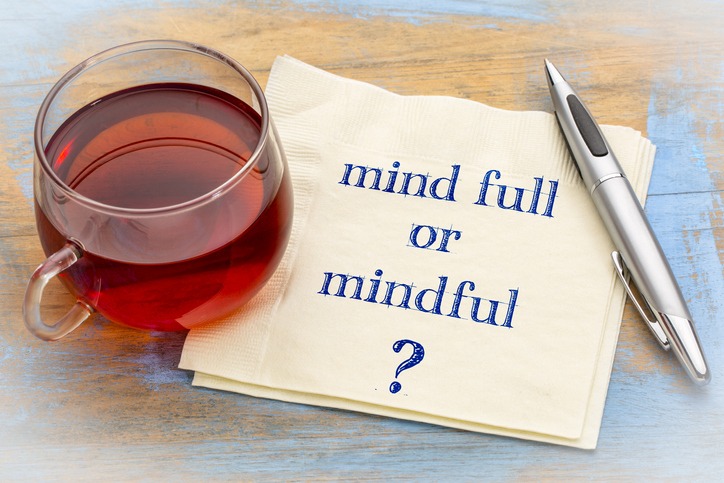Mindfulness means being fully in the moment, aware of what is going on, and not allowing oneself to become overwhelmed or to react inappropriately. Mindfulness helps to make it more a part of regular life. It can help make a habit of pausing to pay attention to what is happening right now instead of being lost in the past or imagining the future. Mindfulness includes recognizing when one’s mind begins to get carried away and drawing it back to now. It is not always an easy thing to do, which is why it is so important to practice often.
Some things can be helpful for practicing. Try one of these suggestions:

- Walking alone in nature can be a good way to focus on the present. Notice the things that surround the path and keep in the moment rather than getting lost in thought. It is easy to slip into autopilot when walking a familiar pathway, so it can be helpful to choose a new trail to keep in the present.
- Enjoy a cup of coffee or tea with a friend and make a point to listen carefully to the conversation. Rather than losing track of what the friend is saying by becoming lost in considering what to say next, focus on the conversation and listen to what is being spoken. Note reactions to what is said but set reactions aside until the friend has finished speaking. Repeat what you are hearing back to verify that what has been said is understood.
- Take a few minutes to just sit, breathe, and focus inward. Make a mental note of each part of the body, focus on mental clarity, and breathe.
- Start your morning with mindful wakefulness. Instead of popping out of bed and jumping into the day, pause to take some deep breaths and take time to enjoy a few minutes of mindfulness before easing into the usual morning routine.
- At a meal, instead of eating automatically and paying no attention to what is entering the mouth and body, focus on each bite of food. Enjoy the flavors and take time to chew thoroughly. Smell the food and drink. Savor it. Resist the temptation to rush through the meal.
- End the day with mindful meditation. Relax on purpose. Take a few moments to just be. Set aside what happened throughout the day in order to focus on the moment.
It can be very helpful to learn more about mindfulness from a book, or to use a journal to help with mindfulness. There are a variety of journals available to encourage being in the moment.
Mindfulness versus Awareness

When reading about self-improvement and improving mental well-being, you might encounter these two terms. While these concepts might appear the same on the surface, there is a stark difference when training your mind to be mindful or fully aware. Mindfulness techniques primarily focus on living in the moment, taking everything in, and letting go of unwanted thoughts or feelings.
On the other hand, awareness training helps train your brain to stay focused on the moment and process everything happening around you. During awareness training, you do not learn to let the negative thoughts and uneasy feelings go away. Instead, it instills learning to process everything going around you; hence, it is called awareness.
Learning to be more mindful in our lives implies taking help from our minds and thoughts as we go through the moment with all our sincerity. It helps us become more grateful and appreciative of the things we are blessed with.
Awareness helps induce a sharp sense of your surroundings by enhancing and sharpening your senses. Awareness training enables you to pick up on others’ emotions and moods and thus helps make you non-judgmental of people.
Learning to be mindful helps you achieve self-love and care, which is vital for your mental well-being. Unlike mindfulness, awareness helps you care deeply and empathize with people around you.
| Mindfulness | Awareness |
| Introspective technique | Acceptance technique |
| Based on feelings and emotions | Based on sharpened senses |
| Best for improving thought processes | Best for improving your manner of living |
| Directed at controlling thoughts | Helps embrace all the thoughts and process them accordingly |
| Does not help much with uplifting mood | Best for controlling mood swings |
What to Opt For?
Mindfulness is the most suitable for learning how to stabilize your mental health. Putting yourself as a priority and taking the required steps to achieve mental well-being is the most important thing. So, if you need to become more peaceful from within, mindfulness is the answer to your apprehensions.

